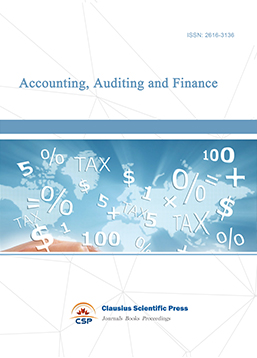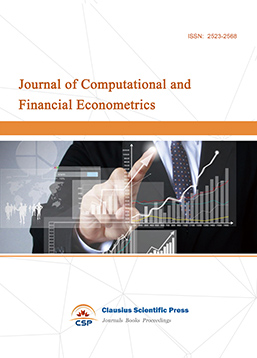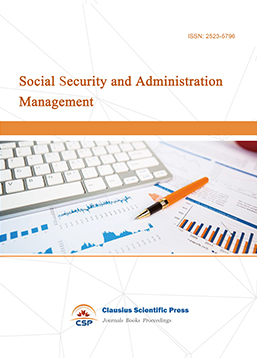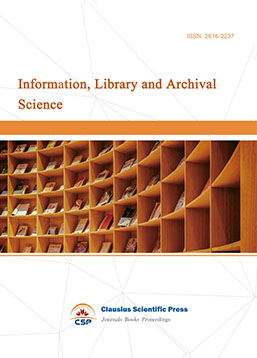The Influence of Cryptocurrency Adoption on the Profitability and Stability of Traditional Banking Institutions: An Empirical Analysis
DOI: 10.23977/ferm.2025.080223 | Downloads: 5 | Views: 215
Author(s)
Ziyuan Tang 1
Affiliation(s)
1 School of Accountancy, Central University of Finance and Economics, Beijing, 100081, China
Corresponding Author
Ziyuan TangABSTRACT
The rise of digital currencies has introduced significant challenges and opportunities for the traditional banking sector. This study investigates how cryptocurrency adoption influences the profitability and stability of banks in China, with a focus on the moderating role of government regulation. It examines the effects of both decentralized cryptocurrencies (e.g., Bitcoin, Ethereum) and the Digital Yuan (e-CNY), China's Central Bank Digital Currency (CBDC), on key banking functions. Using a quantitative approach, data was collected through structured surveys and financial records, and analyzed using descriptive statistics, correlation analysis, multiple regression, and moderation techniques. The results show that while decentralized cryptocurrency adoption negatively affects bank profitability, CBDC usage strengthens financial stability by aligning with regulatory structures. Moreover, strong regulatory policies appear to buffer the negative financial effects of crypto adoption. These findings offer practical insights for banking institutions adapting to digital finance, and contribute to academic understanding of how innovation and regulation intersect in transforming financial systems.
KEYWORDS
Cryptocurrency, Central Bank Digital Currency, Bank Profitability, Financial Stability, RegulationCITE THIS PAPER
Ziyuan Tang, The Influence of Cryptocurrency Adoption on the Profitability and Stability of Traditional Banking Institutions: An Empirical Analysis. Financial Engineering and Risk Management (2025) Vol. 8: 193-204. DOI: http://dx.doi.org/10.23977/ferm.2025.080223.
REFERENCES
[1] Krishna, S. J. S., Panda, A., & Sindhuja, P. (2023). Cryptocurrency adoption and its influence on traditional financial markets. Dynamics, 8(11), 1-7.
[2] Wu, Y., & Zhu, W. (2024). Decentralization and Centralization: The Two Facets of Digital Currency. In The Fundamentals of Digital Currency, 47-57.
[3] Zhang, J. (2025). Impact of Digital Yuan (e-CNY) Promotion on Traditional Banking: Challenges and Response Strategies. Law and Economy, 4(1), 24-37.
[4] Rawal, A., Gopalkrishnan, S., Tharkude, D., & Deshpande, P. (2024, September). Banking Meets Crypto: Integration Strategies in a Post-Demonetization Landscape. In 2024 International Seminar on Application for Technology of Information and Communication (iSemantic) (pp. 300-306). IEEE.
[5] Kayani, U., & Hasan, F. (2024). Unveiling cryptocurrency impact on financial markets and traditional banking systems: lessons for sustainable blockchain and interdisciplinary collaborations. Journal of Risk and Financial Management, 17(2), 58.
[6] Xia, M. (2021). In search of the perfect coin: China’s approach towards cryptocurrency and its own central bank digital currency. Banking & Finance Law Review, 36, 419-456.
[7] Corbet, S., Lucey, B., Urquhart, A., & Yarovaya, L. (2019). Cryptocurrencies as a financial asset: A systematic analysis. International Review of Financial Analysis, 62, 182-199.
[8] Yang, M. (2016). Cryptocurrency in China: Light-touch regulation in demand. Available at SSRN 2792477.
[9] Davis, F. D. (1989). Perceived usefulness, perceived ease of use, and user acceptance of information technology. MIS quarterly, 319-340.
[10] Silva, P. (2015). Davis' technology acceptance model (TAM)(1989). Information seeking behavior and technology adoption: Theories and trends, 205-219.
[11] Christensen, C. M. (2015). The innovator's dilemma: when new technologies cause great firms to fail. Harvard Business Review Press.
[12] Charitou, M., & Lois, P. (2020). Factors affecting US Financial Institutions profitability: Empirical Evidence. Review of Economics and Finance, 18, 156-161
[13] Aziz, O. G. (2020). Does bank profitability stimulate economic growth in the Arab region?. Review of Middle East Economics and Finance, 16(2), 20190017.
[14] Ciaian, P., Rajcaniova, M., & Kancs, D. A. (2016). The economics of BitCoin price formation. Applied economics, 48(19), 1799-1815.
[15] Bai, H., Cong, L. W., Luo, M., & Xie, P. (2025). Adoption of central bank digital currencies: Initial evidence from China. Journal of Corporate Finance, 102735.
[16] Xu, M. T., Hu, K., & Das, M. U. S. (2019). Bank profitability and financial stability. International Monetary Fund.
| Downloads: | 38827 |
|---|---|
| Visits: | 1023946 |
Sponsors, Associates, and Links
-
Information Systems and Economics

-
Accounting, Auditing and Finance

-
Industrial Engineering and Innovation Management

-
Tourism Management and Technology Economy

-
Journal of Computational and Financial Econometrics

-
Accounting and Corporate Management

-
Social Security and Administration Management

-
Population, Resources & Environmental Economics

-
Statistics & Quantitative Economics

-
Agricultural & Forestry Economics and Management

-
Social Medicine and Health Management

-
Land Resource Management

-
Information, Library and Archival Science

-
Journal of Human Resource Development

-
Manufacturing and Service Operations Management

-
Operational Research and Cybernetics


 Download as PDF
Download as PDF